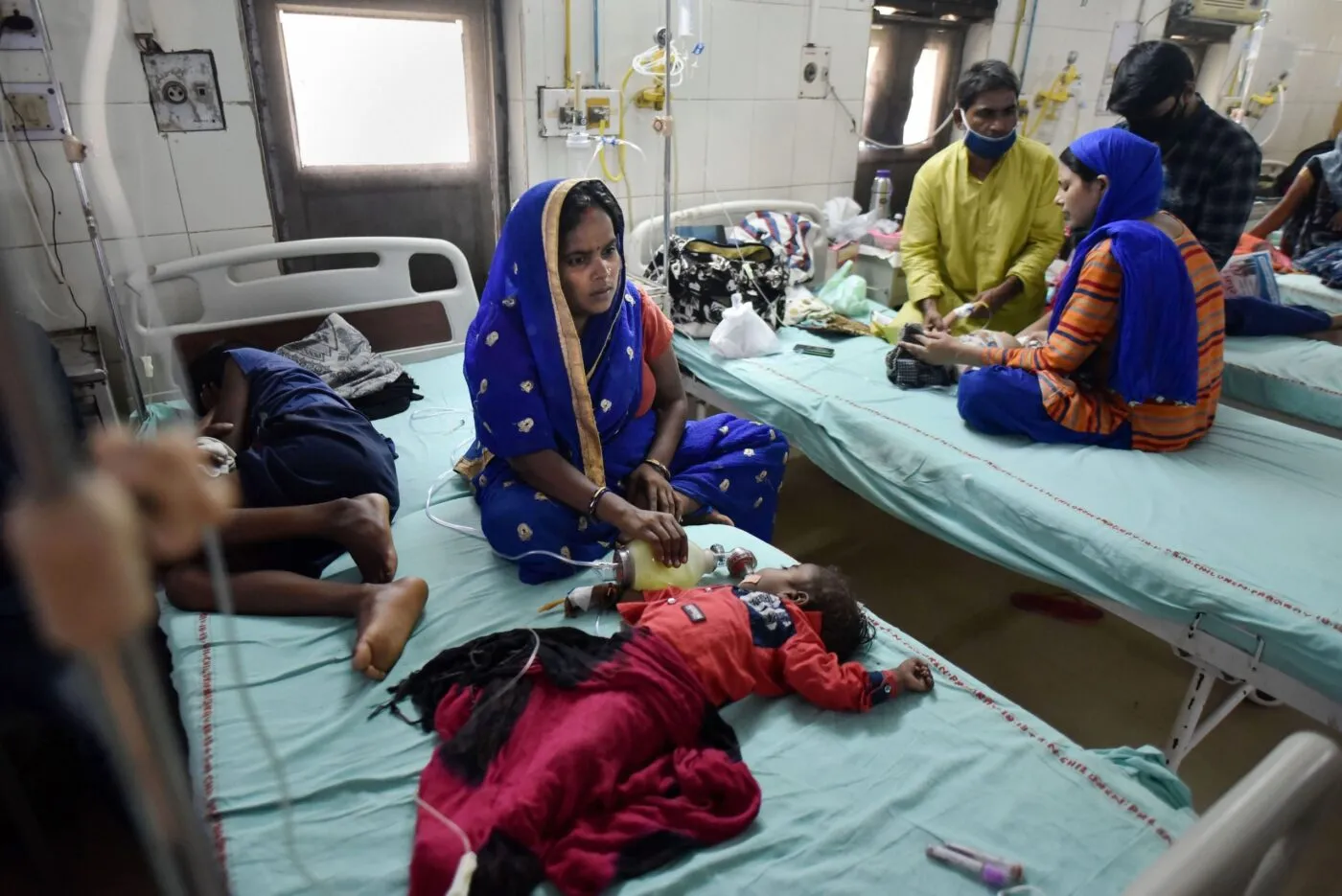Mysterious Fever Outbreak in India: 14 Dead, Including 6 Children
A recent outbreak of a mysterious fever in the Kutch district of Gujarat, India, has led to the deaths of 14 people, including six children. The situation has prompted an urgent response from local and state authorities to contain and address the crisis.
On September 12, officials from Gujarat launched a comprehensive intervention, deploying specialist doctors and 50 medical teams to the affected areas. The outbreak has struck seven villages in the region, raising concerns about its origins and potential impact. The symptoms associated with this illness closely mimic those of the flu. Affected individuals have reported experiencing cold-like symptoms, persistent coughs, fever, pneumonia, and severe difficulty in breathing.
Initial clinical investigations have revealed troubling findings. At least 10 of the deceased individuals are believed to have succumbed to pneumonia, severe respiratory infections, or respiratory failure. Additionally, two people died from heart attacks, and one from a stroke. These findings suggest a range of complications, making it challenging to pinpoint a singular cause.
In response to the crisis, Gujarat Health Minister Rushikesh Patel convened an emergency meeting in Bhuj to assess the situation and develop strategies for managing and mitigating the outbreak. During this meeting, Patel emphasized the need for immediate action and efficient resource deployment. Reports indicate that from September 3 to 10, the Ministry identified 48 new cases of fever in the affected area, underscoring the rapid spread of the illness.
The government has mobilized significant resources to tackle the outbreak. At Adani G K General Hospital, authorities have arranged for 100 isolation beds, 30 ventilators, and non-invasive positive pressure ventilation (BiPAP) equipment to handle the influx of patients and ensure adequate medical support. This proactive approach aims to provide essential care and manage emergency cases effectively.
Despite the severity of the situation, Health Minister Patel reassured the public that this outbreak does not compare to the scale of the COVID-19 pandemic. He stressed that the situation is being closely monitored and that residents should seek medical attention promptly if they exhibit symptoms. Government ambulances are on standby to transport patients to designated hospitals, and contingency plans are in place to handle a potential surge in cases.
The Indian Ministry of Animal Husbandry has confirmed that the illness is not zoonotic, ruling out the possibility of transmission from animals. To further investigate the cause of the fever, samples from affected patients have been sent to two key research institutions: the Gujarat Biotechnology Research Center (GBRC) in Gandhinagar and the National Institute of Virology (NIV) in Pune. These samples are undergoing detailed analysis to identify the precise pathogen responsible for the outbreak.

Experts are currently examining potential links between the outbreak and recent heavy rains in the Kutch district. The Health Ministry has also ruled out the possibility of an infectious disease outbreak with cluster transmission, as there has been no evidence of widespread contagion. The investigation continues as authorities work to determine the exact cause and develop appropriate public health measures.
This outbreak of mysterious fever is part of a troubling trend that has emerged since the COVID-19 pandemic. India has faced at least two previous instances of unexplained fevers, resulting in numerous fatalities. In both cases, the precise causes of these illnesses remained unidentified, highlighting the challenges faced by health authorities in addressing emerging and unexplained diseases.
As the situation unfolds, the government and health officials remain vigilant and committed to addressing the crisis. They continue to work on improving diagnostic capabilities, enhancing medical care, and implementing preventive measures to safeguard public health. The ongoing investigation aims to uncover the underlying causes of the outbreak and prevent future occurrences.
The outbreak in Kutch serves as a reminder of the importance of rapid response and coordinated efforts in managing public health crises. The collaboration between state and local authorities, medical professionals, and research institutions plays a crucial role in tackling such emergencies and ensuring the well-being of affected communities.